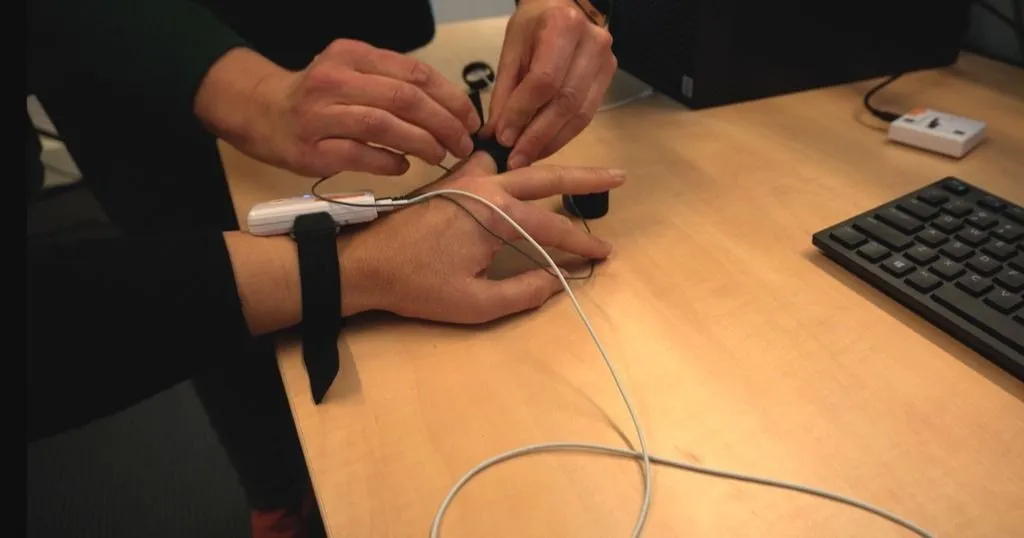Alexa, Siri, Google – Are voice assistants the future of marketing?

Voice assistants – they are found in almost every aspect of our daily lives. Elaine Mathe studied how users interact with voice assistants and what emotions they show in response to played ads.
Posted by
Published on
Tue 28 Jul. 2020
Topics
| FaceReader | Facial Expression Analysis | FACS | Human-computer Interaction | Emotions | Measure Emotions |
This is a guest blog post by Elaine Mathe. Elaine used FaceReader during her study about voice assistant marketing. Enjoy reading!
Alexa, Siri, Google – Are voice assistants the future of marketing?
Voice assistants – they are found in almost every aspect of our daily lives. Asking Siri about the weather, telling Alexa to play music, and setting a reminder simply by saying ‘Hey, Google’; while these interactions might have seemed strange in the beginning, they have become the norm these days as the growing number of voice assistant users suggests [1].
With more active users, the marketing potential of these digital assistants increases [2] alongside the uncertainty about the new communication tool [3]. Voice assistant marketing? Yes! But how? Little research has been done on this topic [4] particularly with regard to user acceptance, so there are still considerable gaps in knowledge in this field.
Methodology
To address this issue, I have designed a study with the objective of assessing the user’s acceptance of voice assistant advertising within the human-machine interaction. The applied methodology was based on a mixture of experimental and quantitative methods.
Since the implicit approach measured the autonomic responses to voice assistant marketing, it was of particular relevance in this study. The explicit approach however was used to apply existing models and to verify the results generated by the experiment.
Experiment – Autonomic Measures
The experiment carried out involved 25 participants of which 13 were in the experimental group and 12 in the control group. The participants were asked to perform a prescribed interaction with a veiled voice assistant. The experimental variation was achieved by manipulating the answer given by the voice assistant.
In the case of the experimental group, as a reply to the question 'Computer, what is the distance from Berlin to Hamburg?' the voice assistant played a promotional message before giving the informative reply. However, the assistant of the control group did not use manipulation and responded with the regular phrase 'From Berlin, Hamburg is 285.3 kilometers away by car.'
Facial expressions were recorded in both groups during the interactions and later on translated into emotions using the analyses software FaceReader 8, which is amongst others based on the Facial Action Coding System by Paul Ekman and Wallace Friesen.
Survey – Self-Reports
Following the interactions, the participants were asked to take a short survey. The first part of the survey focused on the self-report of emotions felt while interacting with the voice assistant. The design of the second part of the survey used with the experimental group was based on the cognitive-affective model of Christina Olarte-Pascual et al [5].
Outcome and Conclusions
The results demonstrated that participants in the experimental group showed more positive emotions compared to the control group. This can be supported by the outcome of the survey. However, only 38% of the participants that received the promotional message indicated that they are willing to accept listening to advertising on voice assistants in the future. The acceptance within the control group was only half as much.
This supports the hypothesis that positive emotions have a constructive impact on the attitude towards voice assistant marketing, which eventually leads to its acceptance. Thanks to the conducted survey, it was proven that the perceived usefulness of advertising on voice assistants and positive emotions towards voice assistant marketing, positively affects the attitude towards it.
Equally, negative emotions towards voice assistant marketing have a negative impact on the attitude towards it. Additionally, the results showed that positive attitudes towards advertising on voice assistants positively affect the intention to receive it.
Emotional responses towards voice assistant marketing
The study demonstrates that users are still hesitant when it comes to advertising during the interaction with voice assistants. However, voice assistant marketing – if done properly – can have fairly positive effects on user acceptance.
Hence, it is time for companies to take first steps in this direction. When doing so, it is of particular relevance to consider the specifics that the voice assistant marketing implies. Due to the intimacy of the human-machine interaction, advertising on voice assistants should focus on need-oriented communication only [6].
Classic campaigns won’t work and disturbing advertising should be avoided to prevent triggering bad emotions. Instead, companies should focus on producing personalized, dialogue- and need-oriented communication that creates value for their customers [7].

Elaine Mathe | [email protected] | Photo credits: Anita Bresser
References
- cf. Statista, usage of voice assistants worldwide, 2016.
- cf. Hörner, T., marketing with voice assistants, 2019, p. 50; cf. Kollhorst, B., Alexa, 2019, p. 187.
- cf. Hörner, T., marketing with voice assistants, 2019, p. V.
- cf. Hörner, T., marketing with voice assistants, 2019, p. V.
- cf. Olarte-Pascual, C. et al., Cognitive-affective Model of Acceptance, 2016, p. 134 –148.
- cf. Hörner, T., marketing with voice assistants, 2019, p. 63.
- cf. Hörner, T., marketing with voice assistants, 2019, p. 61 ff.
Bibliography
Gentsch, Peter (ed.): Künstliche Intelligenz für Sales, Marketing und Service. Mit AI und Bots zu einem Algorithmic Business – Konzepte und Best Practices, 2. Aufl., Wiesbaden: Springer Gabler, 2019
Hörner, Thomas: Marketing mit Sprachassistenten. So setzen Sie Alexa, Google Assistant & Co strategisch erfolgreich ein, Wiesbaden: Springer Gabler, 2019
Kollhorst, Bruno: Showcase: Aus Alexa wird Relaxa – Schulterblick in die Entwicklung des Skills „Smart Relax“ der Techniker Krankenkasse, in: Gentsch, Peter (ed.), Künstliche Intelligenz für Sales, Marketing und Service. Mit AI und Bots zu einem Algorithmic Business – Konzepte und Best Practices, 2019, p. 186–198
Olarte-Pascual, Cristina, Pelegrín-Borondo, Jorge & Reinares-Lara, Eva: Cognitive-affective model of acceptance of mobile phone advertising (2016). Ekonomie a Management, 19 (4), 134– 148, http://dx.doi.org/10.15240/tul/001/2016-4-010
Related Posts

Behind the scenes at MARIN: research into human decision making

Interacting with autonomous cars

